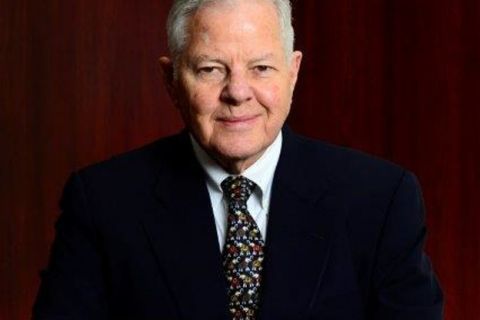Following hard on the heels of the dramatic changes in Russia in the early days of its rebirth, the country witnessed the blossoming of independent players besides the big organizations that are now world-class players. These independents had anticipated the reform movement by setting up joint ventures in the late 1980s and early 1990s. The major reorganization of the sector began in 1992-93 and led to a fast, some say hasty, process of privatization, which reached its heyday in 1995. This denationalization and decentralization opened the oil market to hundreds of new players with origins as diverse as their ownership structures: private, cooperative, municipal, public, joint-stock, and foreign and Russian joint ventures, operating upstream and downstream but primarily involved in crude-oil and petroleum-product trading. Meanwhile, the 11 vertically integrated oil companies formed after 1995 were strengthening their positions as the cornerstones of the oligopolistic industry of today's Russia. Their role in shaping the sector's evolution has been fundamental, thanks to their direct access to Russia's decision-makers and the bargaining power provided by their sheer weight in the economy. In the shadow of these giants and would-be giants, independent players are struggling to succeed in the face of adversarial conditions. According to Elena Korzun, General Director of Assoneft, the association created in 1994 to defend and promote the interests of small to midrange oil companies in the Russian Federation, there are more than 150 small and midsize companies operating in Russia. Out of the 348 million tons of oil (including condensate) produced in 2001, vertically integrated companies accounted for 284 million tons (81.6%). State-owned companies produced 39.9 million while small to midsize producers extracted 24 million, roughly 7% of the total. Some 17 million tons were produced by Assoneft members. These independents were created to develop fields that were left over or brushed aside by the majors for technical reasons. Small fields, difficult reservoirs, abandoned wells or depleted fields were their first targets, alongside competing for licenses to develop small to medium-size assets. Today, 59% of such small to medium-size fields (of up to 30 million tons of extractable reserves) and 41% of the large fields (30- to 300 million tons) are developed or have licenses owned by small and medium independents. In comparison, only 28% of the small-medium fields belong to vertically integrated oil companies. Dozens of companies have emerged, eager to grab the benefits of the rich Russian subsoil. Many joint-ventures involving foreign partners have been established, benefiting from 100% export allowances and major tax benefits (suppressed in 1997). The independents have had to compete with the appetite for asset-grabbing of their large vertically integrated colleagues. To date, more than 10 companies with total output of 65 million barrels per year have been swallowed up by Lukoil, Rosneft (the latest being Severnaya Neft), Sibneft and the other hungry Russian majors. Darkening horizons For those still in place, challenges are piling up. Firstly financial: since the raison d'être of independent companies is the development of oil in difficult extraction conditions, they have lower well productivity than the majors. Hence the fact that independents achieve a wide range of production standards with output varying from 1,000 barrels per day to about 9,000 for Sibir Energy Plc, 3.6 million barrels per annum for Tatarstan's Tatnefteotdacha, and much lower yields from smaller players in the federation. These companies are facing difficulties in their everyday business, notably on the fiscal front. A tax reform was implemented in 2002, replacing excise, royalty (based on domestic sales, which was largely dodged by the majors through the use of transfer prices) and geological recovery taxes with a new unique tax frame. Independents are now paying taxes based on the price of oil on world markets, while in reality they can export no more than about 30% of their production through the country's pipeline system. The rest of their crude is exported by railway or tanker or is sold on the domestic market, theoretically liberalized in 1995, but still largely controlled by the majors and federal authorities. In fact, the majors are often the main buyers of independents' production, in order to export as much of their own crude as possible and keep the juicy export premiums to themselves. Such margin-squeezing has become an integral part of the game. The result is that prices on the domestic market reach only a fraction of world prices (a cubic meter of crude, or 6.28 barrels, is sold at the rock bottom price of $30 to $32). This severely diminishes the margins for independent producers, while the tax regime is adding extra weight on their fragile shoulders. A large field with major capacity and low lifting costs developed by a major will benefit from the same tax level as a difficult field, presumably developed by an independent bearing considerably higher production costs. The situation will surely be worsened if the announced state plan to hike crude export duty by as much as 50% by April this year is implemented. "The situation of domestic pricing is dramatic for our companies. The price is very low and we lack a free market for crude as well as a free market for refining capacity," says Yelen Korzun, general director of Assoneft. Limited refining access represents another headache for independent players. The sale of refined products could offer them relief and allow them to benefit from the premium of added value, but here again, prospects are limited. The Russian Federation lacks refining capacities, at least independent ones. Most of the country's 26 refineries are controlled by the majors. "Following the breakdown of the Soviet Union, the oil sector was divided by the administration to create 11 large companies, while the independents emerged as the real market players, driven by and subject to competition," says Korzun. "Unfortunately, all the infrastructure, refineries, pipelines, etc., ended up in the hands of the big players, without the state drawing up sufficient codes of conduct. Unlike in the United States, here independent players don't have a solid legal framework, like antimonopoly laws, to protect their access to infrastructure and defining behavioral codes to regulate the sector. Here, there is only one rule: all rights belong to the largest and strongest companies." Export strategy To bypass such market bottlenecks, refining projects are flourishing country-wide, from Severnaya Nefte's project in the Oryol region, to the long-discussed possibility for the oil-producing Tatarstan Republic to build a refinery for the benefit of the almost 30 independents operating there. For others, mini-refinery plants or further alliances amongst independents to build plants catering for the collective needs of producers are some of the options envisaged, but investment costs are prohibitive for many of them. Another major issue for independent producers is the need for export access, which has become even more crucial since the implementation of the new tax system. Independents, alongside the majors, are eager to have 100% crude oil export access. Majors are already exporting 70% to 80% (crude and oil products) while independents are exporting only an average of 32% of their crude. Following the law on "natural resources monopoly," item 6, all companies are allowed equal access to the Transneft system, the Russian pipeline monopoly, according to their self- stated transportation volumes. Nevertheless, the system is reaching maximum capacity. And in today's high oil-price environment, the majors are trying to keep most of the current export capacity for themselves. Thus, alternative export routes are being sought. Out of the estimated 4 million barrels exported from and via Russia by all means and routes, some 600,000 barrels per day are leaving the country by rail and small ports, thus bypassing Transneft. A new measure, if adopted, would mean that any volume of crude entering the pipeline web would have to meet certain standards for salt, water and sulfur. In regions like the traditional oil powerhouse of the Volga-Urals, or Tatarstan, old oil fields often display higher sulfur content and such a measure would be a death blow for many small to midrange producers, unless a tax arrangement is made to take the extra cost burden of treatment into account. Success stories In this rather difficult environment, major success stories are emerging and calling for analysts' interest. London-listed Sibir Energy Plc is an example. Its chief executive officer, Henry Cameron, had been conducting a legal advisory business for years in the former Soviet Union but returned to the U.K. in 1996, when business conditions were satisfactory enough for city investors to look again at the Russian oil industry. Following a string of acquisitions and consolidations in Western Siberia, and thanks to strong ties between Cameron and Moscow's prominent businessman Cagla Tchigirinsky, Sibir today controls more than 1.4 million barrels in proven and probable reserves. It also holds a major stake in Moscow's only refinery, the 9.6-million-ton-per-year-capacity Moscow Oil Co., to be integrated in the newly created Moscow Oil and Gas Co. (MOGC). This much-prized refining asset is protected by the will of Moscow's mayor, Yuri Luzhkov, to preserve a free oil market for the city and its region, beyond the control of Russia's monopolists. Cameron stresses the importance of this refinery for an independent like Sibir Energy: "It is easier to bypass the pipeline restrictions by exporting refined products and selling the balance on the domestic market. Access to refining capacity clearly brings in a lot of benefits, including increasing the margins of your domestic sales to the level of export margins. Let's also bear in mind that the Moscow region itself represents a market the size of Greece." Like Sibir Energy, which faces the unwillingness of Shell to develop the licensed fields of Salym without a production-sharing agreement (PSA), other independent players also have to cope with difficult partners, oilfield neighbors or simply large competitors. Nobel Oil Group, today extracting 10,000 barrels per day from its two operating fields in the semi-autonomous Komi Republic (1,000 kilometers north of Moscow) has had to fight hard against its giant neighbor (and 25% shareholder) Lukoil, the region's main producer and explorer of the oil-rich tundra subsoil. Nobel Oil won a tender process for a field but then had to face Lukoil's unwillingness to open its transportation infrastructure in the region to Nobel Oil's crude. For Grigory Gurevich, the company's president, the issues faced by the independents are crushing for any company, and should call for strong external interactions. "If we are to have any weight in the energy balance, the government must support the independent companies. Also, the need for foreign investment and partnership is crucial, as foreign partners bring not only financing but, more appealing for the Russian producers, technology. They also bring their experiences of separation between business and government, and their determined approach and efforts towards modifying the legal framework. Their voice is what can make the difference." Foreign ambitions, local solutions Such foreign operations are numerous, from leading firms such as Marathon Oil, once a stakeholder in the Sakhalin II mega-project (before selling to Shell, Mitsui and Mitsubishi), and Ocean Energy Inc., which is in a joint venture with Tatex. Established in 1990, Tatex is a joint venture between oil major Tatneft and Texneft, a subsidiary of Ocean Energy, Houston. The company is marketing its technological expertise in tank vapors recovery units (VRUs), and is also producing 550,000 tons of oil from its two licensed fields of Onbysk, 30 kilometers west of Tatarstan's giant Romashinkoye Field and the Demkinskoye Field, producing heavy crude. There is still plenty of potential for independents in Russia, provided of course, that the Russian majors are willing to let independent companies live at all. Though the Russian oil market is phenomenally attractive, to succeed in the federation one has to insulate oneself from risk. Hence the absolute necessity for a local partner, and this is exactly the role that the Russian independents are very eager to offer their counterparts worldwide. In the words of Sibir Energy's Cameron, applicable to so many others, lies the dilemma and motto of many of the most successful independents of Russia: "We are punching well above our weight, but we are still in the ring."
Recommended Reading
Texas Pacific Land Approves Three-for-one Stock Split
2024-03-10 - Each stockholder of record as of March 18 will be distributed two shares for each share owned.
Baker Hughes Awarded Saudi Pipeline Technology Contract
2024-04-23 - Baker Hughes will supply centrifugal compressors for Saudi Arabia’s new pipeline system, which aims to increase gas distribution across the kingdom and reduce carbon emissions
Hess Midstream Increases Class A Distribution
2024-04-24 - Hess Midstream has increased its quarterly distribution per Class A share by approximately 45% since the first quarter of 2021.
73-year Wildcatter Herbert Hunt, 95, Passes Away
2024-04-12 - Industry leader Herbert Hunt was instrumental in dual-lateral development, opening the North Sea to oil and gas development and discovering Libya’s Sarir Field.
EOG Resources Wildcatting Veteran Billy Helms to Retire
2024-04-02 - Joining an EOG Resources predecessor in 1981, Helms is among the pre-1986-oil-bust generation who later found success in shale.





